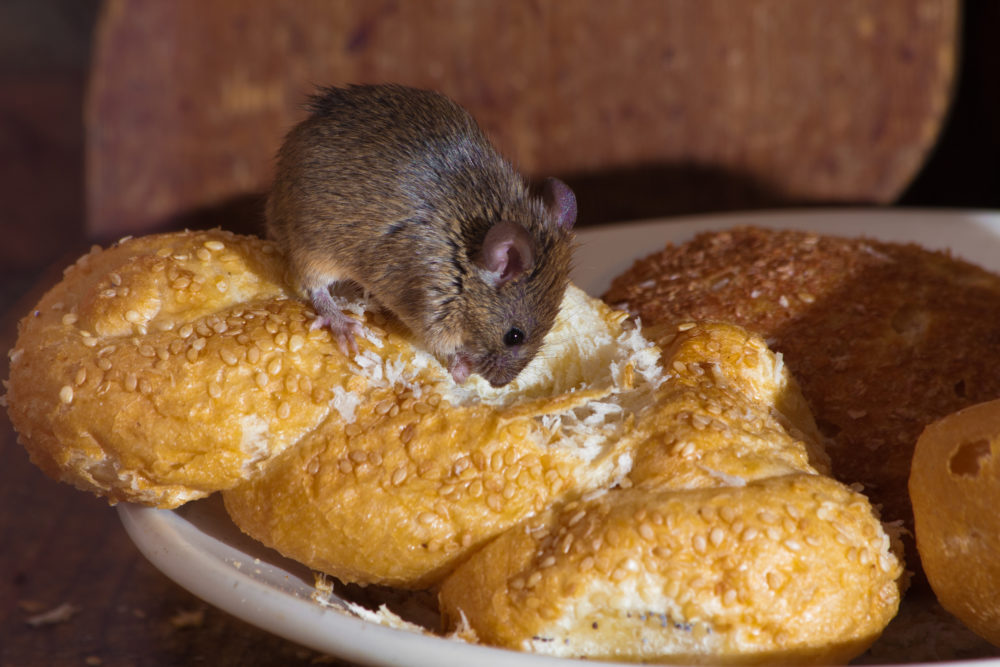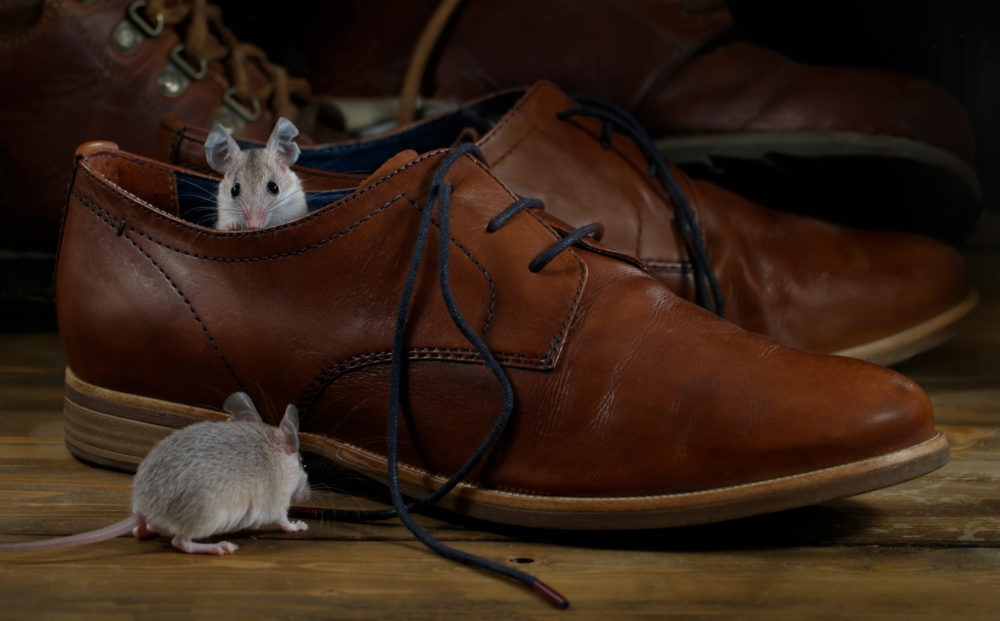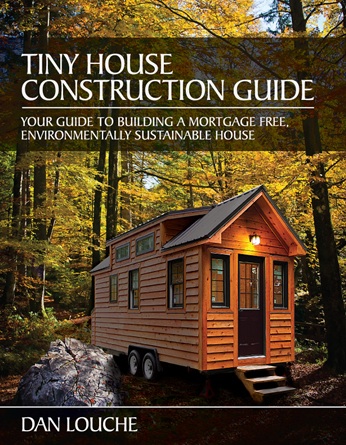How Do Mice Get In Your RV?
Mice are mammals and because of that, they are warm-blooded. They need food and warmth in order to live and to reproduce. During cold months of the year, especially during late fall through early spring, rodents look for areas that protect them from the elements. Mice usually have burrows or they find areas in sheds, old homes or garages where they can nest.

Contents
RVs are a prime location for mice to nest in because it is warm and often provides a supply of food, as well, while minimizing any exposure to outside predators. There are so many nooks and crannies to hide in, so many points of entry and sources of warmth that mice really like RV living. Bottom line: the RV provides warmth, food, nesting materials and safety to mice, all in one convenient location.
Mice only need a hole the size of a dime to enter a location, while rats only need a hole the size of a nickel. This provides plenty of opportune points of entry for mice when it comes to the RV: from slideout gaps to holes in the underbelly, or areas from the storage bay into the RV interior area. There are also access points if the plumbing or wiring vents are exposed or not properly insulated.
The two main things that attract mice to enter a camper are warmth and the scent of food. If a camper is unoccupied, the best way to avoid a rodent infestation is to make it as unwelcoming as possible: remove all food and do not heat it, but winterize the unit and seal all the points of entry.
How To Know If There Is Mice In Your RV?
There are several tell-tale signs: first of all, there are the droppings. Second of all, there are often holes (in the floor, cracks in connection points or chew holes at backs of cabinets) or shavings of wherever the mice chewed a hole to create a point of entry or even a nest.
Third of all, there are holes in pantry food items, such as dried beans, crackers or bread. Finally, there is often a stench from a dead mouse carcass, if one happens to get stuck or electrocuted someplace.
They prefer warm spaces and tight areas where they can nest, such as corners of cabinets, under the dinette seating area, wiring area etc.
Why Worry About Having Mice On Your RV?
While some individuals think of mice as cute and cuddly, there are some serious issues with having them in your RV.
Aside from the point of hygiene and the fact that having rodents share your living space is gross, there are other issues related to a rodent infestation:
- They chew through your furniture, mattress, wiring
- They nest in warm spots and reproduce fast
- They chew through dry foods boxes, bags and other containers
- They excrete waste everywhere
- Their waste, fur and dandruff etc. causes allergies and respiratory issues
- They create an awful smell (especially when you have a dead carcass stuck somewhere).
How To Deal With Mice Inside The RV
There are different ways to get rid of mice once you have them move into your RV: first of all, place repellent in most areas to deter them from getting cozy. Secondly, you will have to remove the mice that are already in the camper before they nest and multiply, or cause significant damage to your camper.
There are different kinds of mouse traps with different goals and mechanisms: no-kill VS kill traps and poison VS bait traps. Of course, you can also obtain a mousing cat to help you with the issue.
Below are the step-by-step instructions for each of the kinds of traps that are available:
No-Kill Mouse Traps
Step 1: Set up the trap in high-traffic areas, behind cabinets, at points of entry.
Step 2: If desired, use some peanut butter as bait.
Step 3: Catch the mouse. Check traps regularly.
Step 4: If there is a mouse, take and remove from the trap and either dispose or release it far away from your location.
Step 5: Reuse the trap.
Kill Mouse Traps
Step 1: Set up the trap in high-traffic areas, behind cabinets, at points of entry.
Step 2: If desired, use some peanut butter or cheese as bait.
Step 3: Catch the mouse. Check traps regularly.
Step 4: Dispose of the mouse carcass.
Step 5: Reuse the trap.
Mouse Poison / Bait
Step 1: Set up the trap in high-traffic areas, behind cabinets, at points of entry.
Step 2: If desired, use some peanut butter, cheese, flavored poison as bait.
Step 3: Catch the mouse. Check traps regularly.
Step 4: Dispose of the mouse carcass.
Step 5: Reuse the trap, if possible.

Cleaning The RV After Getting Rid Of Mice
First things you want to do is to get the mice to move out of the camper by placing deterrents all throughout the camper. Once you are sure there is no new activity in the camper, it is time to start the clean-up: make sure you wear gloves and a facemask to protect yourself from the germs. Mix your cleaning solution.
If you are using bleach, the recommended mix is 1 part bleach to 10 parts water in a spray bottle. Spray all the surfaces until wet and let sit for 10 minutes.
Use a paper towel or a disposable towel to wipe up the droppings and surfaces. Throw into a sealable container or thrash bag for immediate disposal.
Place new deterrent pouches and check for any new activity after 2 weeks.
If there is no new mouse activity, you are now ready for thorough deep cleaning with your favorite cleaning supplies. You can use peppermint essential oils cleaner to disinfect and repel mice naturally in the future.
Here is a link to the detailed video: https://www.youtube.com/watch?v=00VAtRs-dQI
Six Ways to Keep Mice Out Of Your RV
There are some preventative steps you can take to avoid having mice issues in your RV:
Check Exterior For All Points Of Entry
Think like a mouse. This might sound funny, but try to trace possible paths that a rodent would take. Remember they like warm spaces with food and will enter via path of least resistance. Make sure you make their path into any of the possible entries near impossible (look for ramps or ways a mouse could easily climb from A to B).
Mice are very nimble and they can use any items that might be leaning against the RV or placed under the RV as a booster or pathway to their entryway.
Seal All Interior Points Of Entry
Perform a 360-degree walk around your camper. Start on the ground level, looking at the underbelly, then storage area level, eye-level, entry door and window-level and finally, including the roof level, as well. If there are any areas that are greater than a dime that can be sealed, make sure you seal them properly.
Areas that cannot be sealed permanently due to functionality, such as air vents or slide-out slots, should be plugged temporarily when not in use. For example, use an old blanket/towel or pool noodle to plug the area around the slideout.
Use Lights Under And Around An RV At Night
Some RVers share that placing string lights around the bottom of the camper at night helps to keep the mice away, since mice like to sneak in unnoticed and hidden in the dark from any predators. Some people use Christmas LED lights around the perimeter of their camper or install underglow lights to deter rodents.
Use Mouse Deterrents And Repellents
There are several different scents mice really don’t like: mint, cayenne pepper, cinnamon, vinegar or peppermint.
If one wants to use chemical/artificial deterrents or repellents, some options include mothballs (naphthalene), ammonia or dryer sheets.
However, keep in mind that some of these might be harmful to pets or children, or often even your own health with prolonged exposure, especially when using in a small area where food is being prepared or you sleep.
There are also ultrasonic mouse repellents that use sound and frequency to deter mice by irritating their sensitive senses to make it unbearable to stay in the radius of that particular device. These are often plug-in or battery-operated.
Some RVers share that pouring human urine around the camper can do a good job of deterring any rodents, as well.
Use Sheet Metal Rings Around Tires And Jacks
Mice struggle to climb up the tires and jacks when you use sheet metal rings or tubes around those areas, as it makes it more challenging to climb to the underbelly. The metal is slippery for mice and they will not succeed.
Keep Your RV Clean Always
Empty your garbage as often as you can. If your RV is not occupied for more than a week, empty the trash completely, empty your cupboards and any areas that might contain food. Look in the other rooms for food wrappers, small trash bins, dropped food etc. (especially if you travel with kids).
Anything that stays in the camper should be stored in closed storage bins that are either plastic or metal. Mice can often even chew through ziplock bags!
FAQs
Does Irish Spring soap keep mice out of RVs?
Yes, and many RVers swear by its effectiveness. There is a certain scent that mice do not care for. Make sure you use the actual Irish Spring soap brand, though.
How do I keep mice out of my RV furnace?
Seal all points of entry properly. Use any deterrents: mice do not like certain scents, such as mint, cayenne pepper, mothballs, cinnamon, vinegar, dryer sheets, or peppermint tea bags. If needed, use traps at the points of entry to prevent the mice from entering any of these areas.
What is the best mouse repellent for campers?
Peppermint oil is one of the best and most safe and effective repellents for mice. Sprinkle a few drops in your cabinets and in all points of possible entry. Your camper will smell minty and the mice will stay away.
Do mothballs keep mice out of campers?
Yes, mothballs keep mice out of campers. They are also a great snake repellant. However, they smell awfully and some people are allergic and sensitive to the ingredients, as they are not good for humans when it comes to long-term exposure. Some people get really bad headaches, as well.
Do dryer sheets keep mice out of campers?
The verdict is out on this one: some RVers swear that Bounce dryer sheets repel mice while others say to not bother and waste time and money with this method, because there are other, much more effective methods.
What scent will keep mice away?
The following scents seem to be best mice repellent: mint, cayenne pepper, mothballs, cinnamon, vinegar or peppermint.



